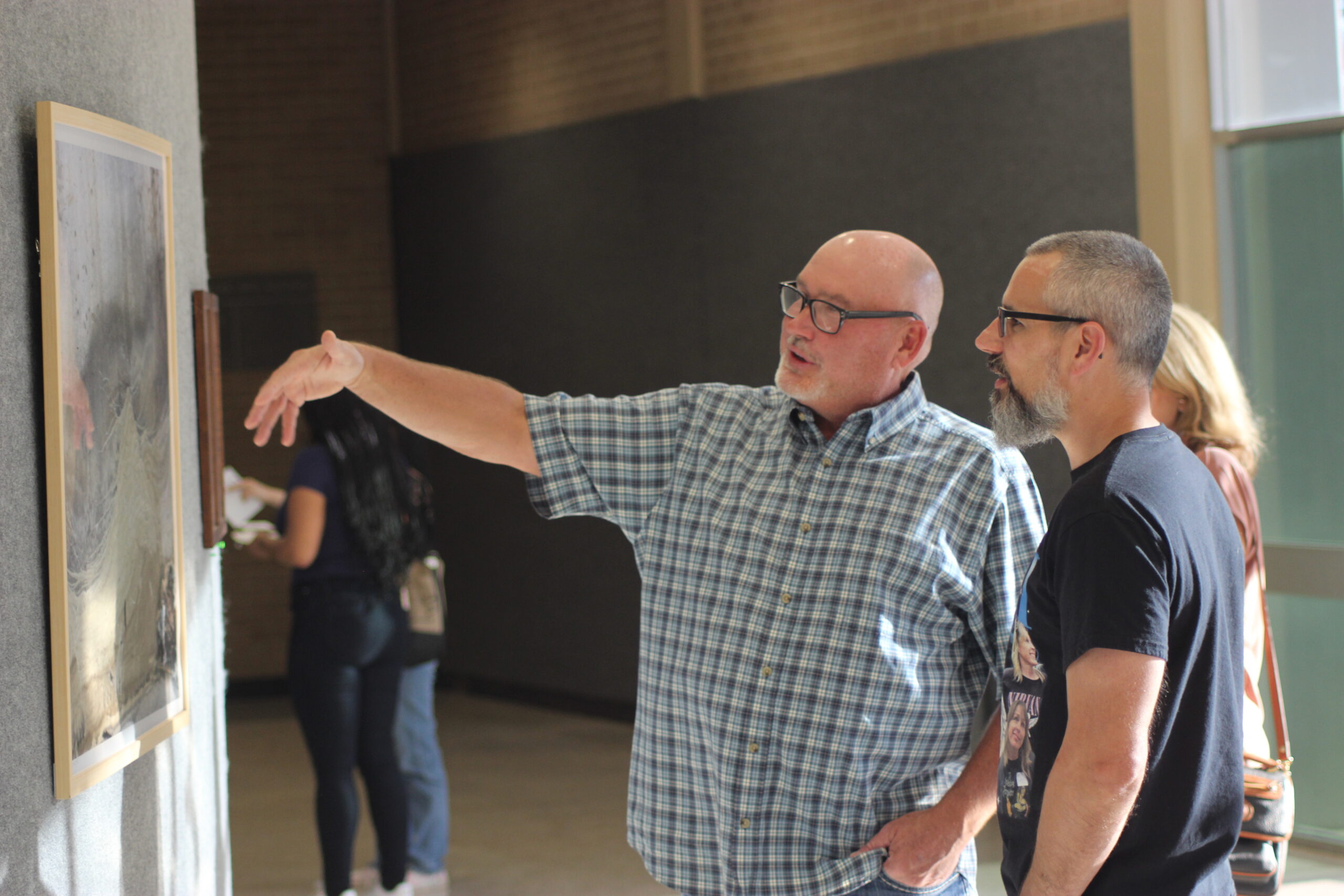“What is it?”
That’s typically the first thing John Hillier hears when he introduces friends and family to his ‘Pareidolia’ work.
The viewer immediately tries to find something known in one of Hiller’s photographs, eager to discover familiar shapes and textures – that’s the nature of the psychological phenomenon of the collection’s moniker. A person might quickly recognize a desert or even a fragment of the cosmos before realizing it’s ‘just’ a picture of a mud flow on a sidewalk, dusted with shimmers of light.
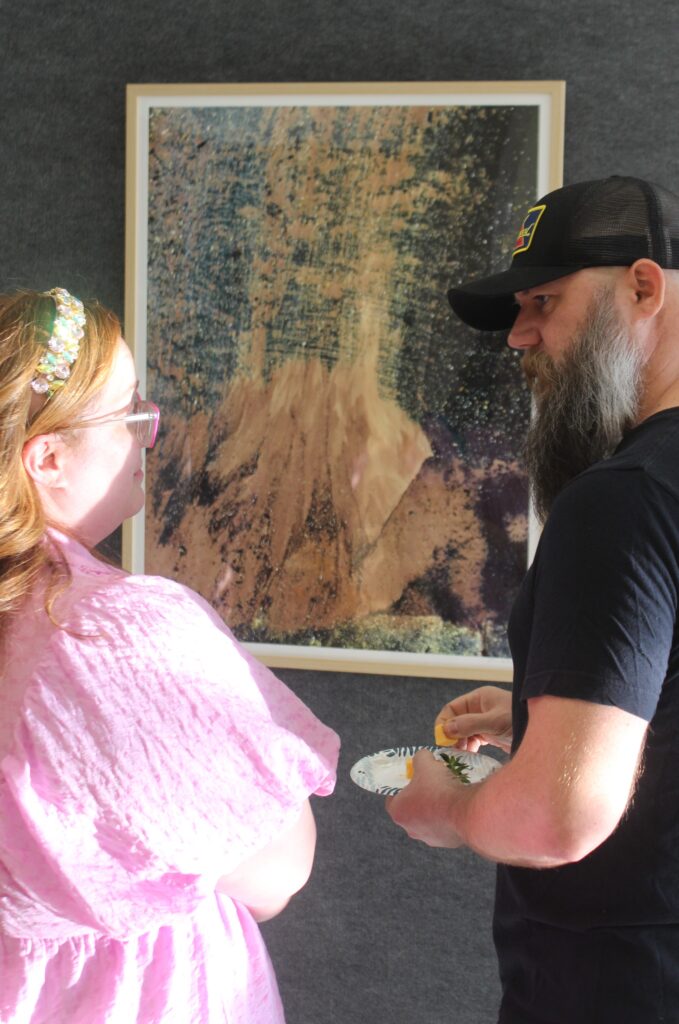
Each of the images currently on display in Kilgore College’s Anne Dean Turk Fine Arts Center was captured during Hillier’s evening walks around the Meadowbrook Historic District nearby. Locals still time, through Sept. 25, to drop by as Hillier invites them ‘to discover meaning beyond the ordinary’ in the free, public exhibition.
“Some of these look like they could be galaxies, some look like they could be under the microscope,” gallery guest Becca Barron observed.
The Sept. 3 opening of the former KC art instructor’s exhibition was a first for Kilgoreite Darren Root. He dove into the experience with gusto, alternating between close-up inspection and viewing the whole of an image to find something familiar in the snapshot.
“I’m enjoying it. I’m intrigued by the photographs,” Root said. Many times he’s spotted Hillier on his walks around the neighborhood, pausing to compose a photo of who-knows-what on the ground.
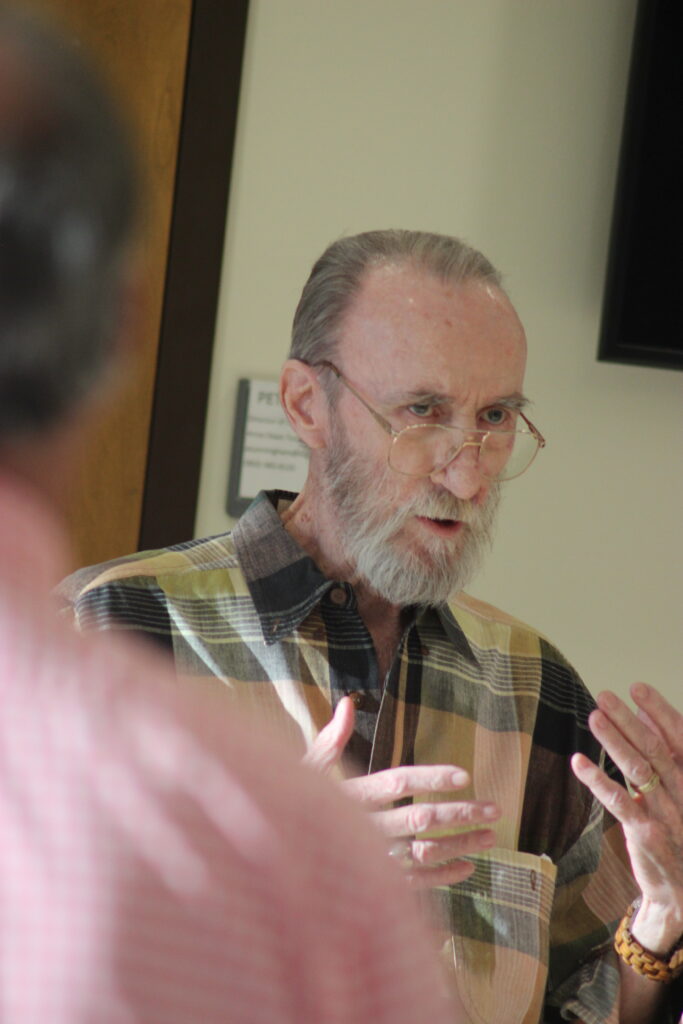
With the final product hanging on the wall, it was a different experience for Root to finally see through his neighbor’s lens.
“It’s kind of intriguing how it all pops out. Your mind starts looking for something. Trying to figure out what it is. What did he see that made him stop and take that photograph?”
Pareidolia describes the human instinct to find the familiar in random stimuli. Spot an animal shape in a cloud or a face in a tree trunk, that’s pareidolia.
Hillier’s images don’t dictate anything to the viewer. Eyes open and scanning intently on his mile-and-a-half walks with the family dog, he let the environment grab his attention then let his smartphone preserve the moment.
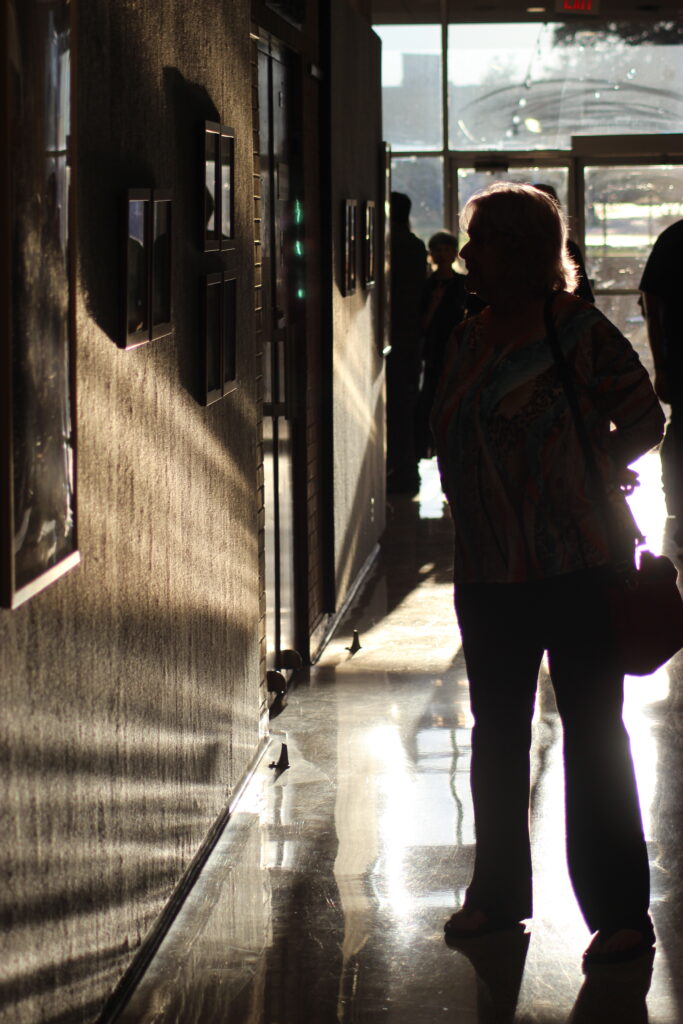
“Obviously, what I’m seeing is mud, detritus, but I’m looking beyond that,” Hillier said. For example, A broken water main provided rich opportunities for photographs: “Ever since I started showing them, people say, ‘Oh, I see this, I see this, I see this. They start to instantly see things.”
One, the photo technician who developed some of the images, was curious about where Hillier took his vacations. Another resisted naming anything specific. Either way, it reveals more about the audience than the artist, a good lesson for the KC Art Appreciation students who’ve been studying the exhibit.
“The artist/viewer relationship is pretty strange,” Hillier remarked. “The conversation’s between you and the artwork. You don’t talk to me, you talk to my work.”
“To the artists out there: When you put your work on the wall, it may not be interpreted the way you expected it to. It’s out there in the public, and anyone’s interpretation may not be yours, so be aware of that. It leaves you to take a life of its own.”
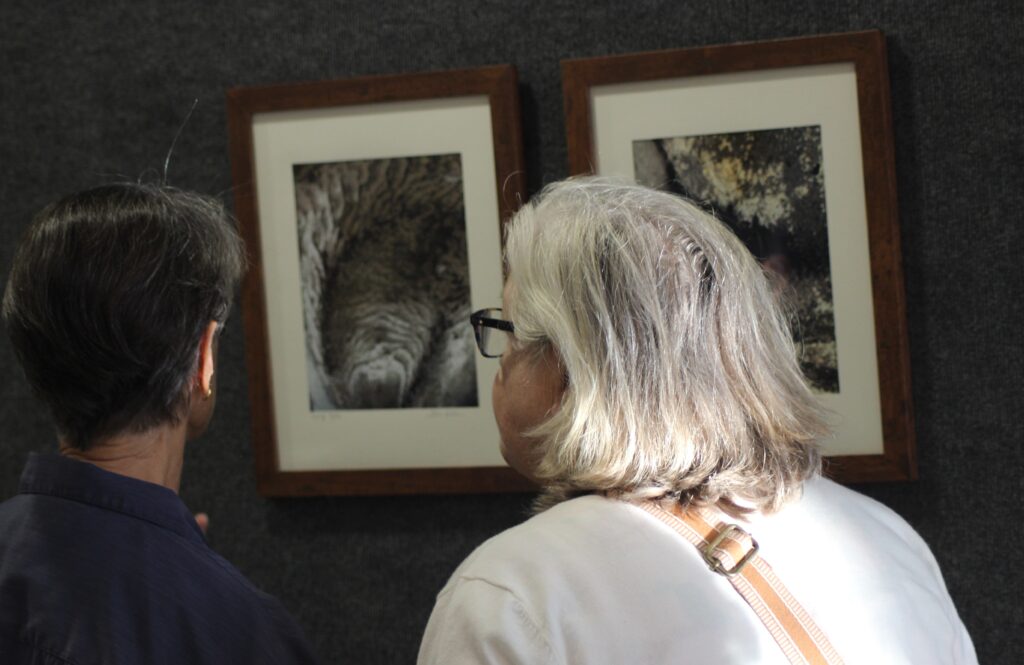
There was very little photo manipulation in the process – whether he was aiming at a sidewalk or spray of sand, Hiller worked to capture the scene as-is through his iPhone 6. He tinkered with the device’s basic photo filters, occasionally kicked a leaf out of the way, generally reticent to alter much in front of the lens.
Speaking during the opening of the exhibit in early September, Hillier noted that, as an artist, he isn’t looking for recognition but for perceptions.

“I see through the eyes of our history. I see through my experience as an artist,” he said, discovering in his final works a myriad of influences from artists he’s studied for decades. “What I do see are the elements and principles of design,” shapes and lines, contours, changes of value, color, texture and space.
Most of the time, he’s not a photographer but a sculptor: “I’m a nineteenth century Romantic. I’m not a modern artist. I’m not even a 20th century artist,” Hillier quips, more of a “conceptual ceramicist.”
His photographs tell a slightly different story – depending on the reader.
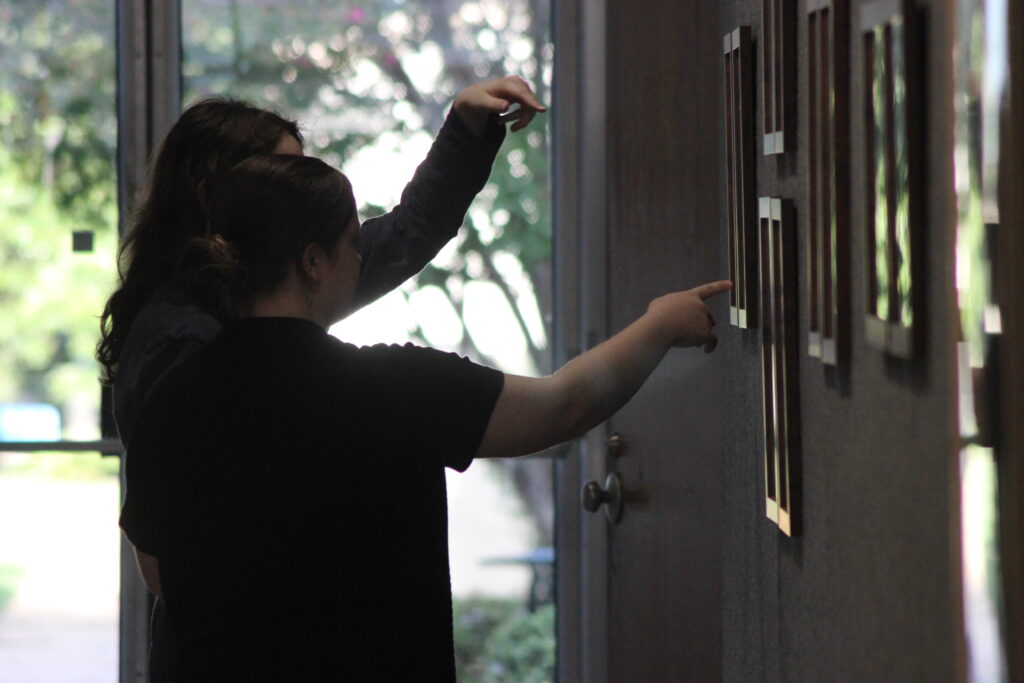
As the mind dances with pareidolia, “When someone can’t determine what it is, they start trying to figure out, well, what it can be. We need recognition. So we start with this recognition and hold on to that thought,” Hillier said. “So we start looking at things and start finding little things.”
Frank Herbert, a longtime colleague, says viewing Hillier’s photographs broadened his perspective.
“Seeing your show, seeing your work, changed the way I was seeing my walk back to my car.”
Per Hillier, “That’s my job as an artist, to help people see things a different way.”

